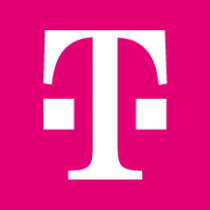
T-Mobile
Acquia DAM (Widen), including the Assets, Insights, and Portals applications.

downloads in the last 12 months
embed views in the last 12 months
total users
The Client
Based in Bellevue, Washington, T-Mobile provides services through its subsidiaries and operates its flagship brands, T-Mobile, Metro by T-Mobile, and Sprint.

The Situation
As the number two wireless provider, T-Mobile is no stranger to connectivity. After all, they’ve been connecting their customers with cell phone coverage and service for decades.
In addition, they have processes and tools to stay connected internally. For example, they have long used digital asset management (DAM) software to distribute branded content to employees and partners across multiple lines of business.
The Challenge
However, functionality limitations in their existing DAM platform prevented it from scaling with their business growth. Plus, when Sprint merged with T-Mobile, they brought two additional DAM systems into their combined technology stack.
Sherwin Tolentino, Senior Manager of Content Management at T-Mobile, shared that his team saw an opportunity to consolidate these three disjointed DAM platforms into a single, optimized solution to support content operations across their entire organization. In other words, one DAM to rule them all.
The Solution
T-Mobile developed a strategy to build and launch this centralized system — a new Acquia DAM site named the T-Mobile Asset Portal, or TMAP for short.
A flexible tool that scales
To support their evolving needs as a company, T-Mobile searched for a DAM solution with functionality that could meet their needs now — as well as one year (or 10 years) down the line. “The right DAM system will be flexible to meet the changing needs of your organization,” shared Sherwin.
Acquia DAM fit the bill. From user permissions to connected tools and portals, T-Mobile is utilizing the capabilities that serve them now, while making strategic plans to scale areas of their site as adoption and needs grow.
A one-stop shop for assets
“The tiebreaker in what motivated us to choose [Acquia DAM] was their Portals. Because we have so many users, we have to make things super simple.” With the Portals application in Acquia DAM, Sherwin’s team can create and share curated collections of assets with specific audiences.
For example, they use Portals to build “toolkits” that contain all of the assets associated with a particular campaign or business initiative. This creates a secure, one-stop shop for anyone to browse and download approved content.
“We have to make things simple because it'd be difficult for our small team to effectively support 3,000 users,” said Sherwin. “We distilled our hundreds of thousands of assets into portals. Each portal is focused on a topic, a theme — and it’s all available on our TMAP dashboard so it makes shopping for assets a little easier.”
A content lifecycle hub
“TMAP is a snapshot of the entire content lifecycle — from concept development to launch, and then post-launch,” said Sherwin.
This includes building-block assets for creative production as well as finalized content, so internal and external teams can access approved videos, photos, logos, and other content they need. And when a campaign wraps, the Content Management team creates a “Creative Summary Portal” to archive, centralize, and effectively memorialize their campaign content. Not only is this a handy historical reference, but it also provides insights that help the T-Mobile team with future content planning. Talk about full circle.
The Results
Brand consistency
With Acquia DAM, T-Mobile provides a single source of truth for their content and processes. Everyone that’s part of a marketing campaign knows exactly where to find the assets and information they need to represent the T-Mobile brand accurately across the entire omnichannel experience.
Having one system is key. “The result of that is consistency across your externally facing marketing creative,” said Sherwin. “What you show in web matches what is in retail, matches what is in advertising, etcetera, etcetera.”
Increased ROI
T-Mobile invests in the creation of high-quality content to support their marketing campaigns. Easy, self-serve access to this content extends the value of this investment, by ensuring assets can be used — and repurposed — across their customer experience.
"Capturing and centralizing final creative in a DAM helps elevate already-existing content and promotes reuse,” said Sherwin. “That accomplishes two things. You’re maximizing the money you spend to produce creative and you’re increasing visibility into what other channels are doing.”
Stronger connectivity
T-Mobile can now connect their marketing, creative, and partner teams with the content needed to support all of their campaigns. Whether via a direct login to TMAP or through a portal embedded on a website, people know where to find assets or discover the best content for a specific channel or use case.
T-Mobile also plans to connect TMAP with their other go-to marketing systems. “DAM is a journey,” said Sherwin. Eventually T-Mobile hopes to integrate Acquia DAM with their project management tool, Workfront. In the meantime, they’re connecting project management teams with approved assets by simply linking to a campaign portal from their Workfront tickets. According to Sherwin, “innovation in baby steps” is the result. And that’s certainly something they’re proud of.
